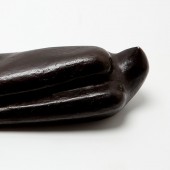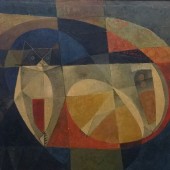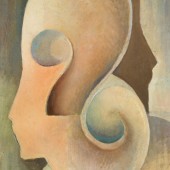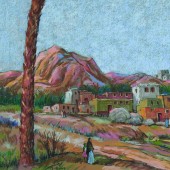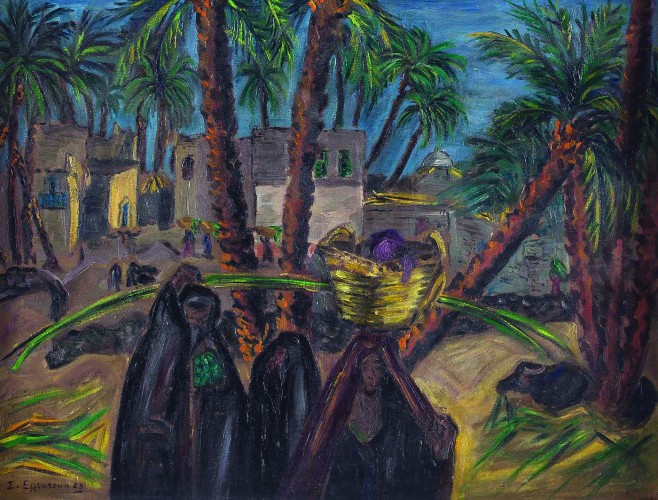
In the farm scene Ezba from 1953 three women emerge in shadows of the foreground and contrast with the bright illumination of objects and the leaves and foliage of the background. As an activist, Inji was a leading figure in the early women’s liberation movements in Egypt and a staunch supporter of labor rights. Her paintings reflect her concern for the peasants, her response to political and social issues of her time.
Born to a Francophone family of wealthy landowners, Efflatoun emerged as an artist in 1942 at the age of 18 with a series of works exhibited in the Art et Liberté Surrealist exhibition in Cairo. She studied art with leading Egyptian Surrealist Kamal El-Telmissany and was was among the most prominent women artists of her generation in the mid-20th century; that included Marguerite Nakhla, Effat Naghi, and Tahia Halim.
وفي مشهد مزرعة “عزبة” من عام 1953، تظهر 3 نساء في ظلال مقدمة اللوحة على نحو مغاير لإشراقة الأجسام وأوراق الشجر وأوراق النباتات في خلفية اللوحة. بصفتها ناشطة ، كان لإنجي دور قيادي في حركة تحرير المرأة المبكرة في مصر، وكانت مؤيدة قوية لحقوق العمال. تعكس لوحاتها قلقها للفلاحين ، وردها على القضايا السياسية والاجتماعية في زمنها.
وبزغ نجم أفلاطون- التي تنحدر من عائلة أرستقراطية ثرية ناطقة بالفرنسية- كفنانة في عام 1942 وهي لا تزال في الثامنة عشرة من عمرها عبر سلسلة من الأعمال التي عرضتها في معرض جماعة “الفن والحرية” السريالية في القاهرة. ودرست الفن على يد كمال التلمساني، أحد رواد الحركة السريالية المصرية، وكانت من أكثر الفنانات بروزاً في عصرها خلال فترة منتصف العشرينيات، أمثال مارغريت نخلة وعفت ناجي وتحية حليم.




